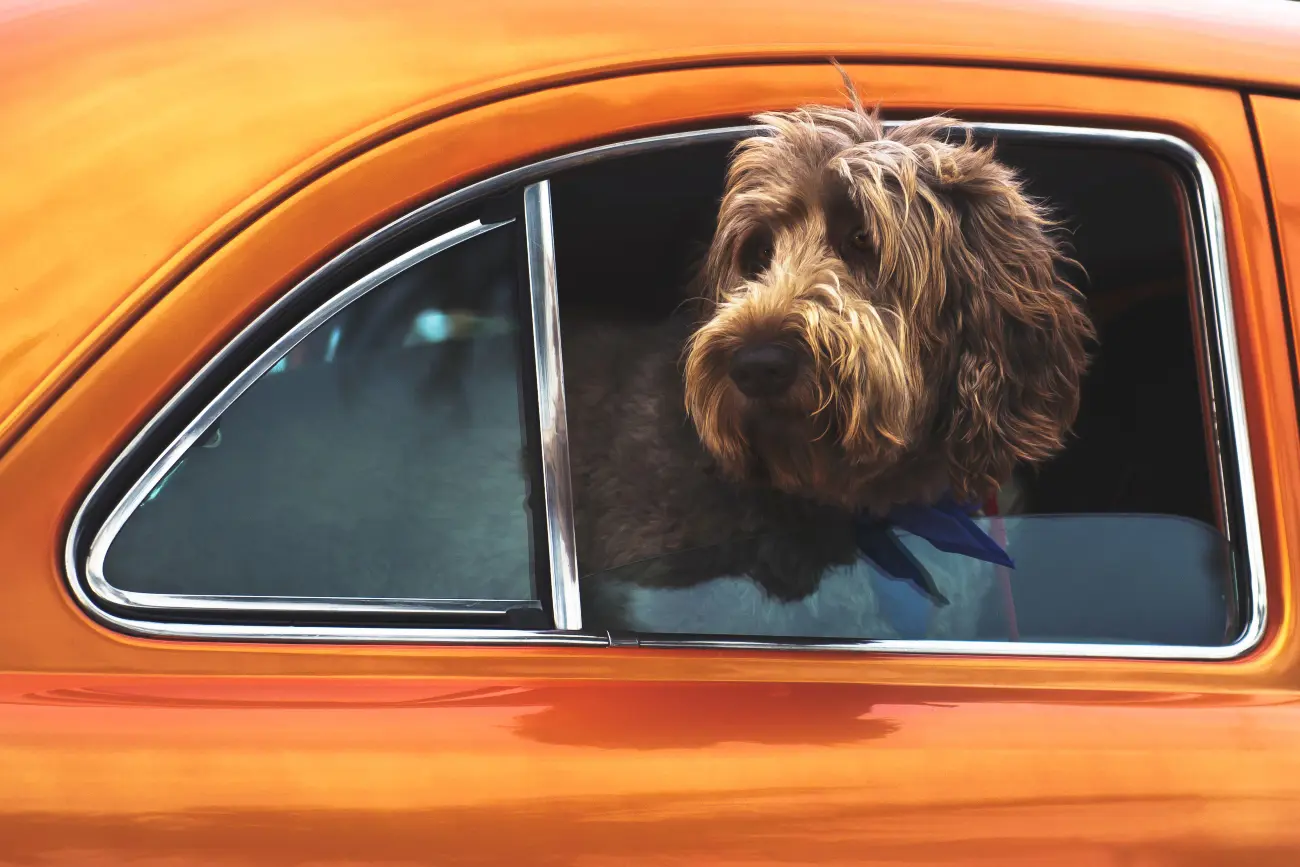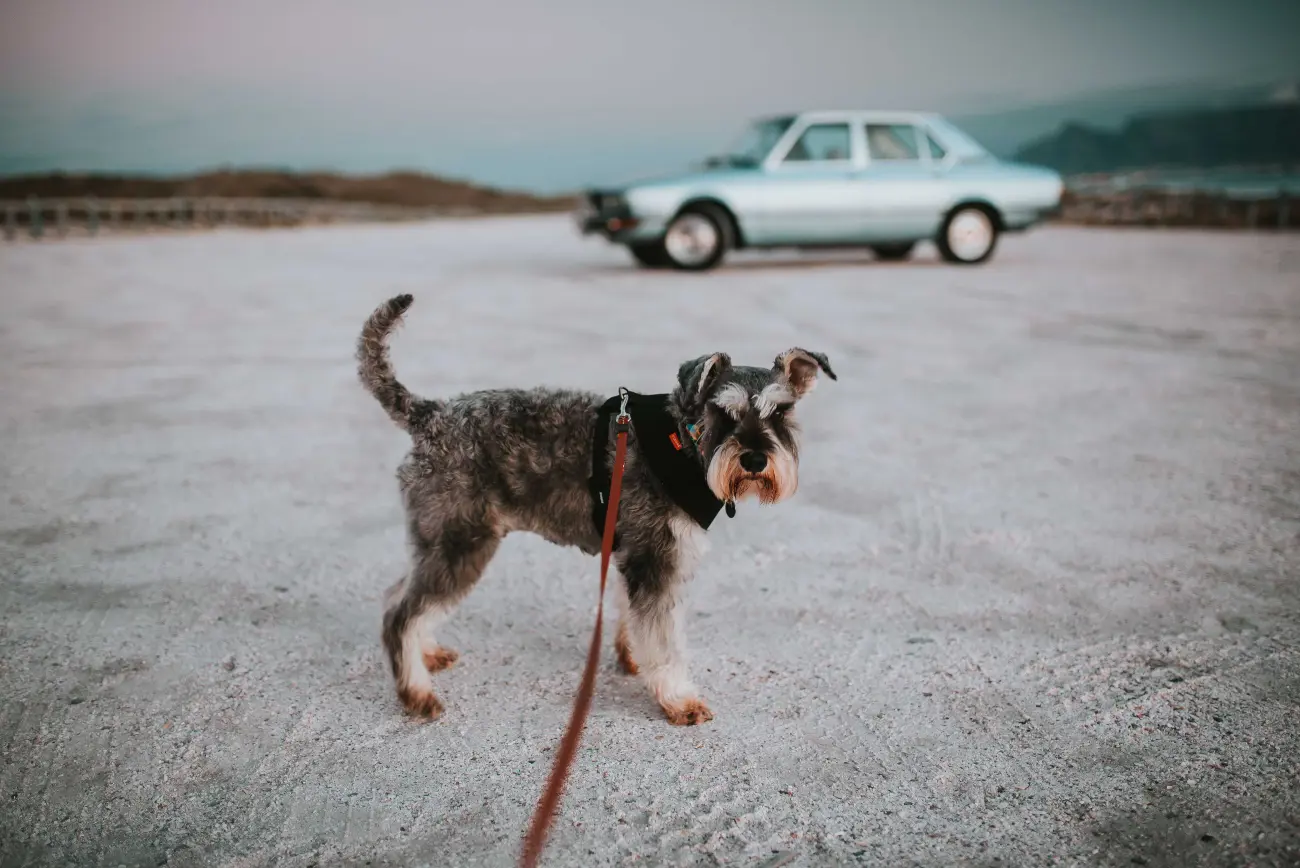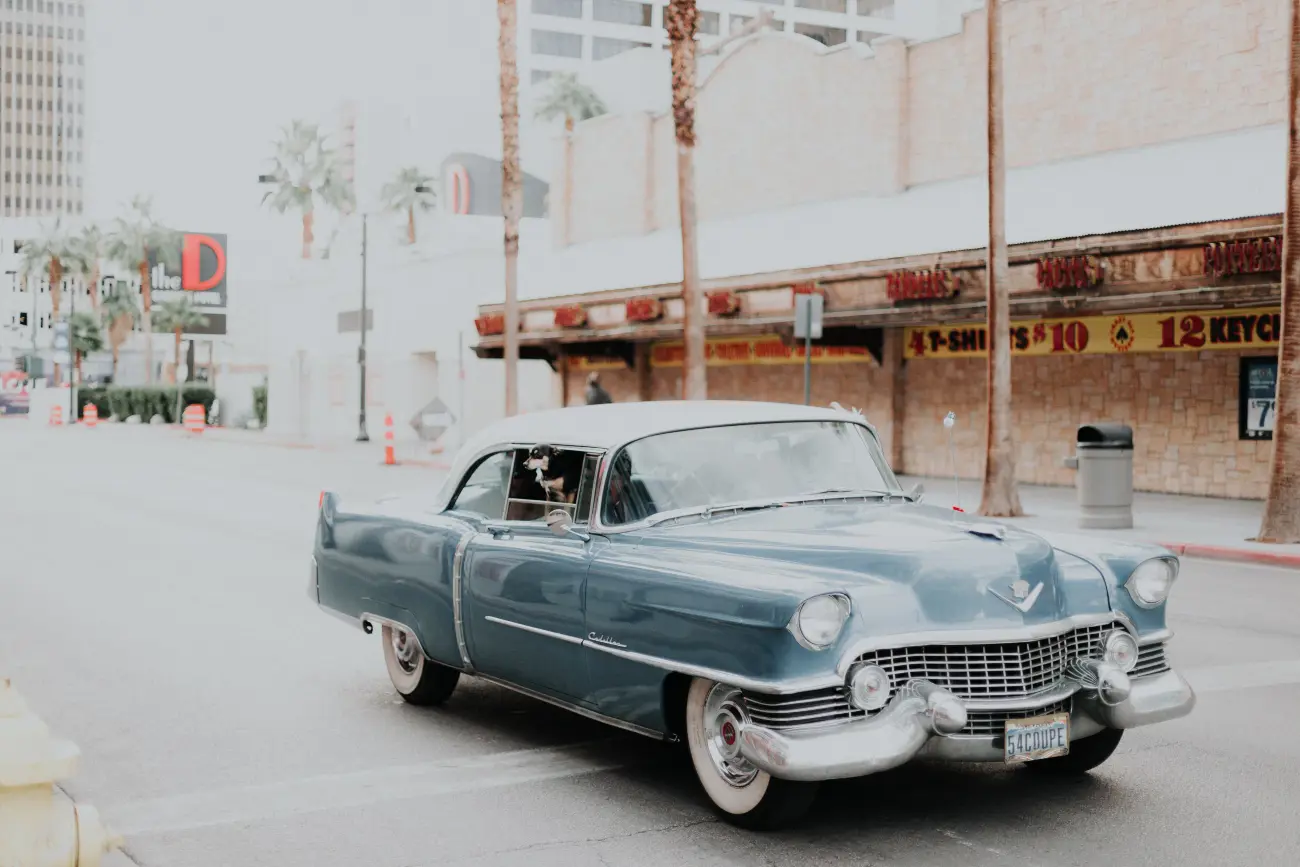Best classic cars for dog lovers
07 December 2021
So, you want to combine two of your life passions: dogs and classic cars. Specifically, you want a classic car that has plenty of vintage appeal but that also provides a safe and enjoyable ride for your beloved canine(s). Which classics out there might do the job for you?
Below, we've made up a little list of some of the best classic cars for dog lovers and their furry friends. After that, we'll look in a little more depth at some of the advice and rules around travelling with dogs – including one or two rules that will need to be adhered to in order to avoid invalidating your classic auto insurance.
When making our selections below, we had a think about what makes for a dog-friendly vehicle. And first and foremost among the criteria is a large, pleasant and airy cabin with enough room for your pets to stretch out or lie down.
Now, a vast array of cars have that capacity to varying degrees – but the most comfortable vehicles for your dog will be those that have a fairly flat, low boot floor, easy for your dog to jump into and out of. Seats that can fold flat (or nearly flat) to make a larger loadbay are another advantage, especially for those owners of larger breeds.
If they fit your budget and/or are available on the classics you've got your eye on, leather seats may be a good choice for dogs that have a tendency to moult. Lastly, knowing how much dogs like to look around and enjoy the journey, we've tried to go for vehicles with a decent window area.

Mercedes S124 estate
If we're talking outright boot space, the various generations of Mercedes' E Class estate have to be in the running. And the S124 generation, from 1985 to 1996, manages a near-perfect mix of cavernous load area, affordability, and genuine classic status.
The S124 (the estate version of the equally popular W124 saloon) earned a very loyal following as a sturdy, comfortable and reliable load lugger, and you will still see quite a few of them on the roads today, in various states of repair. Some are lovingly maintained, as befits their status as premium cars from one of the world's most revered car marques. Others are sturdy family workhorses. Many of them will have been used to ferry dogs around, and in some comfort.
The boot is massive – and even better, the rear seats are built to just the right height so that, when they are tipped forward, you get a completely flat load floor, providing absolutely acres of space for your four-legged chums.
If you do choose to go down the S124 route, we'd recommend joining the Mercedes-Benz Club – an invaluable source of knowledge, advice, spare parts and perhaps even discounts on your classic car cover.
BMW Z3 M Coupe
Now, we know what you're thinking: an angular little coupe (not to mention any BMW with an 'M' in its name) seems a strange choice for a pet-carrier, no? Surely the cars in this list are all going to be sturdy, roomy, practical and not averse to a bit of dog hair – not some showy, sporty model from BMW's performance line?
Well, the thing is, in coupe form, the M version of BMW's Z3 roadster makes a lot of sense. It's a brilliantly packaged, high-performing small car. You get a powerful engine, two seats, and a large hatchback boot. Result: great fun motoring for you, an optional passenger, and one happy dog with the wind in their fur. A low floor and a decent-sized boot help to seal the deal. Some M Coupes even got the optional net to separate boot occupants from the driver.
All in all, a rather good and very enjoyable pocket rocket for you and your dog. If you can find one, that is: not a huge seller, the M Coupe comes up for sale relatively rarely and has gathered a cult following around itself.
Range Rover Classic
So. We had our fun just there with the BMW M Coupe. However, you need a bit more space – if you're transporting a larger dog, you certainly will. And a Range Rover, with its great mix of endless space, premium luxury and go-anywhere abilities, could be just the thing.
In another contrast to the BMW, the 'classic' Range Rover enjoyed an extremely long production life – over a quarter of a century, compared to the Beemer's four years – and is thus still around in decent numbers. You should be able to find a well-maintained model from, say, 1989, with around 100,000 miles on the clock, for somewhere in the region of £10,000 to £15,000. You'll need to go post-1981 for the option of four doors, which may make life easier when letting your dog in and out of the car.
Once you're both safely on board, you and your pup will be able to head out on walkies just about anywhere, thanks to the Rangie's legendary off-roading abilities. Down a green lane, over the sand dunes, down the shingle to the lake's edge – the Range Rover will take you and your dog anywhere and everywhere.
Volvo 850 estate
When it comes to roomy Volvo estates, we had quite a few choices. There's the 240, perhaps most people's mental image of the sturdy Volvo load-lugger, with its near-two-decade lifespan. Or the 740 / 760 double act from the 1980s – tough, reliable, and still around in decent numbers today.
However, we're going with the 850, from the 1990s. This car ushered in a number of changes for the Swedish company. For example, it was the first Volvo to feature front-wheel drive, as well as an unusual five-cylinder, transverse-mounted engine. Thankfully, it didn’t break with those proud Volvo traditions of cutting-edge safety (including a high-tech side impact protection system)… and a thumping great boot.
What's more, if the concept of a fast estate has always appealed to you, you can go for the seriously quick T5 or T5-R variants. These sporty 850s achieved major successes for Volvo in the British Touring Car Championships. They'll get from 0 to 60 mph in six seconds, thanks to engine tuning and transmission developed jointly with Porsche. And there's still plenty of room for the dog.
Nissan 300C
The 300C was the name Nissan gave to the sixth generation of their Cedric saloon, when it was destined for the UK and European market. In either saloon or estate form, this big, handsome 1980s Japanese barge is a relatively rare find in the UK – but, for dog lovers, it's well worth seeking out.
That's because the 300C estate has not one but two trump cards up its sleeve. For one thing, the boot is capacious, and gives a long, low load floor. But the really nice touch is the electric rear side window, which allows you to get to the boot from the side without needing to open the hatch. We can think of a few scenarios where that might be useful when travelling with a furry friend or two.
It's worth noting, though, that (for reasons best known to themselves) Nissan made the 300C estate a little more workaday than its saloon counterpart. The estate gets a manual gearbox, instead of the saloon's auto; steel wheels instead of alloys; and, perhaps most seriously, doesn't get air con. Still, your dog would probably prefer you to just leave all the windows open anyway…

Renault Kangoo
The spate of van-based MPVs that hit international markets in the late 1990s and early 2000s had one very significant point in their favour: extreme practicality. These were, after all, commercial panel vans with some extra seats and windows added in – so, while not the absolute last word in style and desirability, these cars give you as much carrying capacity as you could hope for within their modest proportions.
Of the various models on offer, the Renault Kangoo is our pick as it arrived on the scene first, way back in 1997. That means that those early models are surely due for classic status right about now. The Kangoo's boxy dimensions allow for an enormous boot space – and, with the rear seats down, that gets even bigger.
Elsewhere, large rear windows make the back of the Kangoo a pleasant place to be – your beloved canine friend shouldn't feel cramped or claustrophobic here. And the hard-wearing rubber floor in the boot and back seats is the perfect place for dogs to retreat into at the end of a wet or muddy walk.
Travelling with dogs: the rules
So much for your choice of dog-friendly vehicle. Next, of course, you need to make sure that your canine companion is travelling comfortably, safely – and legally.
The Highway Code (specifically Rule 57) states that dogs and other animals must be appropriately restrained when travelling in cars. This is to make sure that animals don't distract the driver – or even injure the driver, passenger or themselves in the event of sudden braking.
If you did end up in an accident that was judged to have been caused by your dog distracting you, you may be charged with 'driving dangerously', which could carry a prison sentence.
What's more, if you need to make an insurance claim, you may find that your classics insurance policy is invalidated if your pet was not suitably restrained.
Happily, there are various animal restraint solutions on the market. These include:
- Crate or carrier – a crate will keep your dog secure in the car. A carrier will do a similar job, but will be lighter and easier to carry.
- Travel harness – in this case, your dog is strapped into the boot, or the front or rear seats.
- Boot gate – placing a grille between the boot and rear seats will prevent your dog from jumping into the cabin and distracting you while you drive.

Keeping your dog comfortable
Just as you would do for your human passengers, you should make sure that your pet will be comfortable on any drives you make together. Things to think about here include:
- Packing plenty of water.
- Making regular stops, so they can stretch their legs and go to the toilet.
- Never leave a dog in a car unattended especially in hot weather during the summer, as they will be prone to heatstroke.
Cars can get hot very quickly – and don't be fooled into thinking that leaving the windows down and parking in the shade will remove the danger. The RSPCA website tells us that, on a 22 degree summer's day, a car can heat up to a lethal 47 degrees within just one hour.
Given all this, it's best to avoid travelling with a dog on a hot day, if at all possible. However, if there's no alternative, you can at least steer clear of travelling in the middle of the day, when temperatures will be highest. If you can, make your journey either in the early morning or the late afternoon. And remember to bring plenty of water.
What about if you want your four-legged friend to travel up front with you, rather than in the back? As the Animal Trust points out, you can allow your dog to sit in the passenger seat of your car, but the airbag must be switched off and you need to push the seat back as far as it will go.
If the cars on this list don’t quite meet your requirements, why not check out more classic estates elsewhere on our site?
Classic car insurance from Lancaster
As a devoted dog owner, you will do all you can to keep your dog happy, safe and comfortable. And as a passionate classic car owner, we know you want to look after your classic to a similar degree. And we're proud to be able to help.
Benefits of Lancaster classic car insurance include:
- Car Club member discounts up to 25%
- Static show cover
- Historic rally cover
- Choice of repairer
- Salvage retention
- Two-year agreed valuation
- 24-hour claims helpline
- Limit mileage discounts
Contact us today to arrange a classic car insurance quote.
